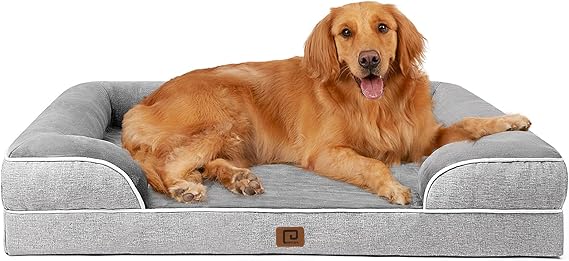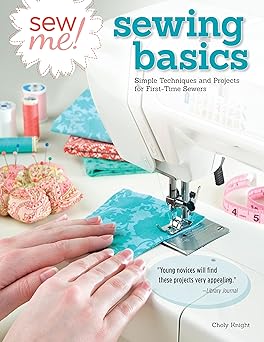
How to Sew Your Own Eco-Friendly Pet Bed
Creating a cozy, comfortable pet bed for your furry friend is a wonderful way to show love and care. But beyond comfort, making an eco-friendly pet bed is a fantastic way to reduce your environmental footprint while providing a safe and sustainable resting place for your pet. In this comprehensive guide, we’ll explore how to sew your own eco-friendly pet bed, covering everything from choosing materials to the sewing process and finishing touches. Whether you are a seasoned sewer or a beginner, this project is both rewarding and impactful.
Why Choose an Eco-Friendly Pet Bed?
Before diving into the sewing process, it’s important to understand why opting for an eco-friendly pet bed matters:
- Environmental Impact: Conventional pet beds often use synthetic materials like polyester, foam, and plastics, which are derived from petroleum and can take hundreds of years to decompose. Eco-friendly beds utilize natural, renewable, or recycled materials that reduce waste and pollution.
- Health Benefits: Natural fabrics and fillings are typically free from harmful chemicals and toxins found in many synthetic products. This can be especially beneficial for pets with allergies or sensitive skin.
- Cost-Effectiveness: By using upcycled fabrics or natural materials, you can save money while creating a unique bed that fits your pet’s needs.
- Personalization: Sewing your own pet bed allows for customization in size, shape, and style, ensuring the bed suits your pet perfectly.
Making a Biodegradable Pet Toy at Home: A Sustainable and Fun Project
Materials Needed for an Eco-Friendly Pet Bed
Choosing sustainable, safe, and durable materials is key to making an eco-friendly pet bed. Here’s a detailed list of materials and tips for sourcing them:
- Fabric
- Organic Cotton or Linen: Both are natural, breathable, and soft fabrics grown without harmful pesticides or chemicals.
- Hemp Fabric: Known for its durability and natural resistance to mold and bacteria, hemp is an excellent choice for pet beds.
- Upcycled Textiles: Old clothes, curtains, or blankets made from natural fibers can be repurposed, reducing waste.
- Avoid synthetic fabrics like polyester or nylon to maintain eco-friendliness.
- Filling
- Organic Cotton Batting: A soft and natural stuffing that is breathable and comfortable.
- Wool: Naturally insulating and moisture-wicking, wool is excellent for warmth.
- Recycled Fabric Scraps: Small leftover pieces of fabric can be shredded and used as stuffing.
- Old Pillows or Cushions: Repurposing these can reduce waste.
- Avoid polyurethane foam or memory foam, which are less eco-friendly.
- Thread and Notions
- Organic Cotton Thread or Recycled Polyester Thread: Ensure your thread aligns with the eco-friendly ethos.
- Natural Dye or Eco-Friendly Fabric Paint (optional): For decoration.
- Zipper or Velcro: Choose recycled or natural options if possible; otherwise, opt for high-quality to ensure durability.
- Tools
- Sewing machine (or hand sewing needles for small projects)
- Scissors
- Measuring tape or ruler
- Pins or clips
- Fabric chalk or marker
Planning Your Pet Bed
Before you begin, consider your pet’s size, sleeping habits, and preferences:
- Size: Measure your pet’s length and width while they are lying down comfortably. Add a few inches for extra room.
- Shape: Common shapes include rectangular, square, round, or bolster styles.
- Washability: Pets can be messy, so designing a removable cover or choosing washable materials is practical.
- Location: Think about where the bed will be placed—indoors, outdoors, or both—as this affects material choice.
Step-by-Step Guide to Sewing Your Eco-Friendly Pet Bed

Step 1: Choose Your Design
Decide on the style of pet bed you want to sew. For beginners, a simple rectangular or square cushion-style bed is easiest. For more advanced sewers, a bolster bed with raised edges can provide extra comfort.
Step 2: Measure and Cut Fabric
- Measure your pet and add 4-6 inches to length and width for comfort.
- Add 1 inch to each side for seam allowance.
- Cut two pieces of fabric in your chosen shape for the bed cover.
- If making a bolster bed, cut additional fabric strips for the sides.
Step 3: Prepare the Filling
- If using batting or wool, cut or prepare it to fit the bed size.
- For shredded fabric fillings, make sure pieces are clean and free of debris.
Step 4: Sew the Bed Cover
- Place the two fabric pieces right sides together.
- Pin or clip around the edges, leaving one side open for stuffing.
- Sew around the edges with a ½-inch seam allowance.
- If making a bolster bed, sew the side strips to the base before assembling the cover.
Step 5: Turn the Cover Right Side Out
- Carefully turn the fabric inside out through the open side.
- Use a blunt tool to push out corners for a neat finish.
Step 6: Insert the Filling
- Stuff the bed with your chosen filling until it is adequately plush but not overly tight.
- Distribute the filling evenly.
Step 7: Close the Opening
- Hand sew or machine stitch the open side closed.
- Alternatively, install a zipper or Velcro closure for easy removal and washing.
Step 8: Add Finishing Touches
- You can decorate the bed with natural dyes or fabric paint to personalize it.
- Consider adding a non-slip bottom by sewing on a layer of natural rubberized fabric or upcycled non-slip shelf liner.
Tips for Maintaining Your Eco-Friendly Pet Bed
- Wash the cover regularly to keep the bed fresh and hygienic. Using a removable cover makes this easier.
- Air out the bed frequently to prevent odors and moisture buildup.
- Repair any tears promptly to extend the bed’s life.
- When the bed reaches the end of its use, consider recycling or composting natural materials to minimize waste.
Introduction to Organic Cotton Rope Dog Toy: Sustainable and Durable Toy for Dogs
Additional Eco-Friendly Ideas
- Use natural cedar chips inside the bed lining to repel pests like fleas.
- Incorporate your pet’s favorite scents using natural essential oils diluted safely (consult your vet).
- Create a matching blanket or pillow using leftover fabric scraps.
- Donate old pet beds and bedding to animal shelters to promote reuse.
Conclusion
Sewing your own eco-friendly pet bed is a rewarding project that benefits both your pet and the planet. By carefully selecting sustainable materials and following a thoughtful sewing process, you can create a comfortable, durable, and stylish bed tailored specifically to your pet’s needs. Not only does this reduce waste and reliance on synthetic materials, but it also fosters a deeper connection with your pet through the time and care invested. Whether you’re a beginner or experienced sewer, this project offers a meaningful way to contribute to a healthier environment while pampering your beloved animal companion.
Get started today by gathering eco-friendly materials and crafting a unique pet bed that your furry friend will cherish for years to come!
